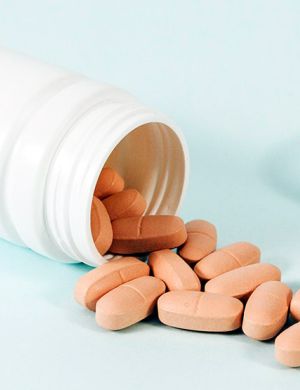
Medical Devices – USA, Europe, Asia and ROW Regulatory News – Sept 2024
USA
Air Powered Dental Handpieces and Air Motors – Performance Criteria for Safety and Performance Based Pathway
The devices covered by this guidance include dental air-powered handpieces, air motors (product code EFB), and contra- or right-angle attachments (product code EGS). These are classified as Class I (reserved) devices under 21 CFR 872.4200. The guidance applies to devices with a primary structure made from materials such as stainless steel or titanium, with a maximum rotational speed of 450,000 revolutions per minute (RPM), and are designed to be sterilized by the end user.
The dental handpieces referenced in this guidance are intended for use in general dentistry procedures, such as cutting and grinding teeth, cavity preparation, tooth and crown preparation, and the finishing and trimming of teeth and filling materials.
Guidance on Dental Cements – Performance Criteria for Safety and Performance Based Pathway
The guidance provides performance criteria for dental cements under the FDA’s Safety and Performance Based Pathway. Manufacturers submitting a 510(k) for dental cements can use these criteria to demonstrate substantial equivalence, instead of directly comparing their device to a predicate device. For relevant standards, manufacturers can refer to the FDA Recognized Consensus Standards Database and are advised to include supporting documentation if submitting a Declaration of Conformity to a recognized standard. The guidance is being implemented without prior public comment as the FDA considers it a less burdensome and public health-consistent policy.
Guidance on Dental Impression Materials – Performance Criteria for Safety and Performance Based Pathway
The guidance provides performance criteria for dental impression materials under the FDA’s Safety and Performance Based Pathway for 510(k) submissions. These criteria allow submitters to demonstrate substantial equivalence without directly comparing the device to a predicate. Supporting documentation should accompany any Declaration of Conformity to FDA-recognized standards. The devices covered are Class II dental impression materials used for creating models for study and producing restorative prosthetics like gold inlays and dentures, regulated under 21 CFR 872.3660 with the product code ELW.
Guidance on Clarification of Radiation Control Regulations For Manufacturers of Diagnostic X-Ray Equipment
The guidance explains that diagnostic x-ray systems are both medical devices and electronic products under the FD&C Act, subject to provisions for both categories. It consists of two sections: one covering general information on diagnostic x-ray equipment and the other addressing specific performance standards in 21 CFR 1020.30-1020.33. The guidance focuses only on the electronic product radiation control (EPRC) provisions, not medical device regulations. To streamline regulatory reviews, the FDA aims to align its standards with international IEC standards. Manufacturers are encouraged to review related FDA guidance and stay informed on updates regarding radiation-emitting products.
Guidance on Conducting Clinical Trials with Decentralized Elements
The guidance provides recommendations for sponsors, investigators, and other stakeholders on implementing decentralized elements in clinical trials, where trial-related activities occur remotely at locations convenient for participants. Decentralized elements can include telehealth visits, in-home visits, or visits with local healthcare providers. The FDA’s regulatory requirements for medical product investigations apply equally to trials with or without decentralized elements.
The guidance fulfills section 3606(a) of the Consolidated Appropriations Act, 2023, which directs the FDA to issue recommendations to clarify and promote the use of decentralized clinical trials (DCTs) in drug and device development. It also references the 2023 guidance on digital health technologies for remote data collection in clinical investigations.
Appeal Options Available to Mammography Facilities Concerning Adverse Accreditation Decisions, Suspension/Revocation of Certificates, or Patient and Referring Provider Notification Orders
This guidance outlines the processes available for mammography facilities to request a review of adverse decisions related to accreditation, certificate suspension or revocation, and patient and referring provider notification (PPN) orders.
If a facility disagrees with an accreditation body’s decision, it can appeal to the accreditation body and, if unresolved, request further review by the Director of FDA’s Division of Mammography Quality Standards (DMQS). A formal hearing with the Departmental Appeals Board can be requested if the facility is dissatisfied with the FDA’s decision.
Facilities challenging a suspension or revocation of an FDA-issued certificate may request an informal hearing. If the certificate was issued by a State Certification Agency (SAC), the facility should appeal to the respective SAC. Appeals of PPN orders can be submitted for supervisory review under 21 CFR 10.75.
EUROPE
Application of transitional provisions for certification of class D in vitro diagnostic medical devices under Reg (EU) 2017/746
The document outlines the process under Regulation (EU) 2017/746 (IVDR) for conformity assessments of Class D in vitro diagnostic medical devices (IVDs). Manufacturers must submit applications to a notified body, and certain aspects of the assessment may involve review by an expert panel and/or testing by an EU Reference Laboratory (EURL). The document provides guidance on applying IVDR provisions related to expert panels and EURLs before the IVDR’s enforcement date (26 May 2022) and leading up to the activation of EURL tasks starting on 1 October 2024, as per Commission Implementing Regulation (EU) 2023/2713.
Guidance on the validity of clinical studies for joint clinical assessments
The European Commission has published guidance on the validity of studies for joint clinical assessments (JCA) under the EU Health Technology Assessment Regulation (HTAR). The guidance emphasizes assessing and describing the certainty of study results in an objective, reproducible, and transparent manner as part of the HTA process. JCAs evaluate the certainty of relative effects based on the strengths and limitations of evidence, but without value judgments, as mandated by HTAR.
The guidance clarifies that appraisal methods that include value judgments, such as those influencing pricing or reimbursement, are not applicable at the European HTA level. However, valid scientific principles are essential for developing JCAs that are clear and interpretable at the national level.
AUSTRALIA
Update: Guidance for eCTD AU module 1 and regional information v3.2
The document provides guidance for compiling an eCTD dossier and the specifications for compiling and validating regulatory activities in eCTD format. It replaces AU eCTD specification Version 3.1 and includes updated information, with a transition plan for implementing version 3.2.
Key implementation timelines:
- AU eCTD version 3.2 becomes effective on 1 February 2025.
- Version 3.1 will be accepted until 31 July 2025, after which older versions (3.0 and earlier) will no longer be accepted.
- Both versions 3.1 and 3.2 will be accepted during the transition period (1 February 2025 to 31 July 2025).
To submit your first regulatory activity in eCTD format, you need to obtain an e-Identifier by emailing esubmissions@health.gov.au, providing details such as the applicant’s name, active ingredient, submission description, and manufacturing site information (if applicable). The e-Identifier is a combination of the letter ‘e’ and six digits (e.g., e123456) and remains valid for the entire product lifecycle unless transferred to a new sponsor.
BRAZIL
Update: Standard on safety requirements for medical devices comes into force
The Collegiate Board Resolution (RDC) 848/2024, effective from September 4, 2024, replaces RDC 546/2021 and updates the requirements for demonstrating the compliance of medical devices, including in vitro diagnostic (IVD) devices. The new standard aligns with global advancements and ensures greater safety and ffectiveness. Key requirements include:
- Devices must meet their intended purpose under specified conditions.
- They must be safe, function as intended, and have acceptable risks considering the benefits.
- Safety and performance must be supported by clinical data for high-risk devices (classes III and IV).
RDC 848/2024 reflects Brazil’s efforts towards international regulatory alignment, particularly with the International Medical Devices Regulators Forum (IMDRF) and Mercosur countries.
Anvisa reviews and consolidates standards for the Medical Devices area
Anvisa has republished the rule prohibiting the use of mercury-based thermometers and sphygmomanometers in health services. The new Collegiate Board Resolution (RDC 922), issued on September 19, 2024, does not change the existing ban from 2017. This update is part of a review and consolidation process outlined in Decree 12.002/2024, focusing on formal adjustments without altering the original guidelines. The resolution officially revokes RDC 145/2017 but maintains the ban on manufacturing, importing, selling, and using mercury-column devices across Brazil.
INDIA
Uniform Code for Marketing Practices in Medical Devices (UCMPMD) 2024
The Department of Pharmaceuticals (DoP) in India has introduced the Uniform Code for Marketing Practices in Medical Devices (UCMPMD) to ensure transparent and accountable marketing of medical devices. Under this code, medtech companies must report the distribution of samples and spending on activities like continuing medical education, uploading this data to the UCMPMD portal within two months after each financial year. The code limits promotions, such as prohibiting events abroad and restricting gifts, travel, and hospitality for healthcare professionals. It also outlines processes for handling complaints, penalties, and appeals for code violations.
MALAYSIA
Termination of Receiving Bank Draft
Malaysia’s Medical Device Authority (MDA) has informed companies that, effective 1 October, the Ministry of Health will no longer accept payments via bank drafts. This shift aligns with the Ministry’s plan to transition to a fully online payment system. Starting 1 October, medtech companies must use the Medcast 2.0+ system and the BayarNow system for payments.
SLOVAKIA
Information for submitting applications under the transitional periods of Regulations (EU) 2023/607 MDR and (EU) 2024/1860 IVDR related to the increase in the number of submissions
Due to an increase in applications and longer processing times, the ZP Section recommends the following:
- Do not submit notifications for medical devices (Class I) and in vitro diagnostic devices (Class A) that are not required under Act 362/2011, §110 b, unless they are for categorization at the Ministry of the Interior.
- Do not submit notifications related to the transitional period under Regulation (EU) 2023/607 for medical devices or Regulation 2024/1860 for in vitro diagnostic devices, unless there is a relevant change (e.g., manufacturer change, address change, etc.). Extensions under the transition period alone do not require notification.
- Only submit documents confirming compliance with the transitional period if requested by ŠÚKL.
If it is found that a medical device does not meet the transitional period conditions, ŠÚKL may order the withdrawal of the device from the Slovak market or use until compliance is achieved.
SWITZERLAND
swissdamed: All registered economic operators are required to validate their data Deadline on 13 November 2024
In August 2024, all economic operators registered with Swissmedic (CHRN) were asked to validate their data migrated to swissdamed within three months. Nearly 1,000 operators have already completed this. The deadline for validation is 13 November 2024.
The validation process involves two steps: first, checking company data, and second, verifying the data of each registered actor. Detailed instructions must be followed, completing steps 1 to 5 in full. This validation is essential for maintaining data integrity in the Actors module, which supports the smooth implementation of the Devices module and provides an overview of the Swiss medical devices market.
Request to review devices that comply with the old legislation
Swissmedic informs authorized representatives and importers that certificates for legacy medical devices, issued under old legislation, will expire on September 26th, 2024. However, if regulatory requirements are met, these devices may continue to be marketed until 2027 or 2028. The letter highlights transitional provisions and obligations, excluding in vitro diagnostic devices. The notice is sent to all registered representatives and importers and is also published on Swissmedic’s website.
THAILAND
FDA adjusts measures to control COVID-19 test kits, emphasizing consumer safety
The FDA has updated control measures for COVID-19 test kits and reagents to align with the current situation and international standards, aiming to reduce approval time while ensuring public access to safe, high-quality medical devices. Manufacturers and importers can now submit detailed information and evidence without needing a medical device technology assessment. This streamlines the process while maintaining safety and international risk control standards. The changes aim to enhance consumer protection and respond to technological advancements. More details are available on the FDA’s website or via a provided QR code.
UNITED KINGDOM
Update: Guidance on Clinical investigations
As part of the process to obtain UKCA, CE, or CE UKNI marking for your medical device, a clinical investigation may be required. And required to notify the MHRA at least 60 days prior to commencing the investigation. Detailed information on how to submit your notification to the MHRA regarding your intention to conduct a clinical investigation for medical devices can be found in the relevant guidelines.
MHRA starts accepting applications for AI Airlock regulatory sandbox pilot
The UK Medicines and Healthcare Products Regulatory Agency (MHRA) is now accepting applications for its AI Airlock regulatory sandbox for medical device developers. This pilot project aims to address challenges in regulating AI medical devices, with the goal of reducing the time needed to bring safe AI devices to patients.
Participants will receive a tailored testing plan and work with regulatory experts to understand the current regulatory framework and data standards. Applicants must demonstrate that their AI-powered device offers potential benefits to patients, is innovative, and presents a suitable regulatory challenge. Applications are open until 7 October, with MHRA seeking diverse candidates across healthcare disciplines and various development stages.
Don’t miss out! Click here to stay in touch.
Categories
- Biopharma (47)
- Consumer Health (15)
- Cosmetics (8)
- Diagnostics (5)
- Digital Health (8)
- Food (2)
- Medical Device (100)
- OTC (3)
- Regulatory Intelligence (5)
- Standards (40)
Recent Blogs
Get the latest updates from Vistaar

Related Posts
CONNECT WITH US








